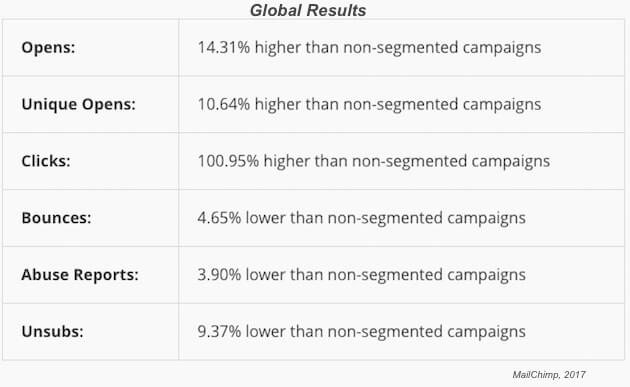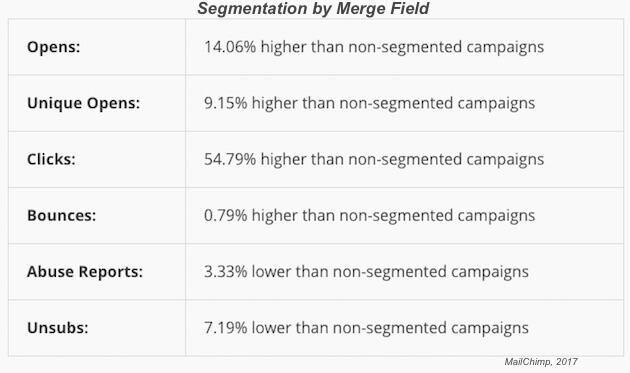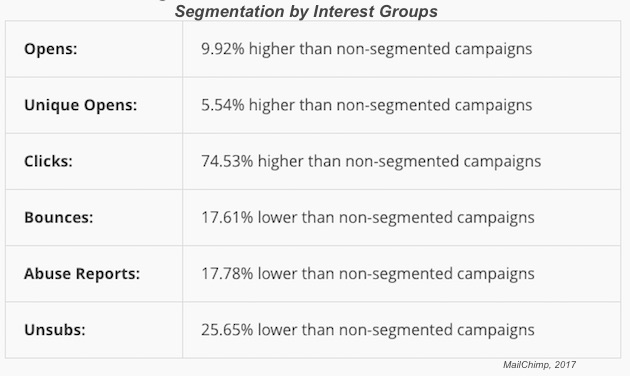
How does email list segmentation affect engagement?
By Sophia Skinbjerg | sophia.skinbjerg@ungapped.com
For many marketers, a lot of time is spent on email list segmentation. It could be creating cohorts based on geographical location, job title or even shoe size – whatever it is, we spend a lot of time perfecting these segments for email purposes.
But does it make any difference? For those of you collecting contact details on one platform only to have to upload them to your email provider, perhaps you feel it’s a lot of manual work for not a lot of results.
Related: Stop using multiple platforms for email, surveys and sms. You can have them all in one.
However, we beg to differ. And the data backs us up. A recent study that analyzed the engagement from nearly 9 million recipients begs found email list segmentation increases engagement and decreases things like bounces, abuse reports and unsubscribes. Let’s check out the study in a bit more detail.
About the study
The study is based on 11 000 segmented campaigns sent by 2000 customers of a single email service provider. These 11 000 segmented campaigns were sent to nearly 9 million recipients.
The performance of each brand’s segmented campaigns were compared with the performance of that same brand’s non-segmented campaigns.
The global results of email list segmentation
The study found that segmented email campaigns all had higher opens, unique opens and clicks than non-segmented campaigns. While opens and unique opens held a lead of 10 to 15% on their non-segmented counterparts, clicks from segmented campaigns had a whopping 100.95% increase compared to non-segmented campaigns.

Comparatively, bounces, abuse reports and unsubscribes were all lower in segmented campaigns compared to non-segmented campaigns.
Related: Using emojis in subject lines – is it smart or stupid?
The results of custom fields on email list segmentation
The study also examined segmentation by custom fields and its impact on engagement. What that essentially asks is, if segments are created based on zip code, job title or customer type, is engagement higher?
The results show that yes, engagement is higher when custom fields are used for email list segmentation. Opens, unique opens and clicks were all higher than that of non-segmented campaigns.
Likewise, bounces, abuse reports and unsubscribes were all lower than their non-segmented comparisons.

Related: Your content matters: 4 copywriting tips for newsletters
Email list segmentation by interest groups
Similarly, if an email list segmentation is based by interest group, engagement is higher than that of non-segmented campaigns. Most notably, clicks in segmented emails are 74.53% higher showing that sending email content to relevant lists will bring you better results.

How to use this data in your own email list segmentation
All of this data points to what many marketers already know; email list segmentation will bring you higher engagement. And with higher engagement likely comes higher conversions, whatever those conversions may be.
If you’re already using email list segmentation, then take this data as a pat on the back: you’re on the right track.
If you’re not using email list segmentation this this data is probably what you need to kickstart your efforts. Our first recommendation in getting started? Make sure you’re using a platform that allows you to store contacts and create campaigns in the same place. Ungapped users, that’s already you. Not an Ungapped user? Get started for free here.